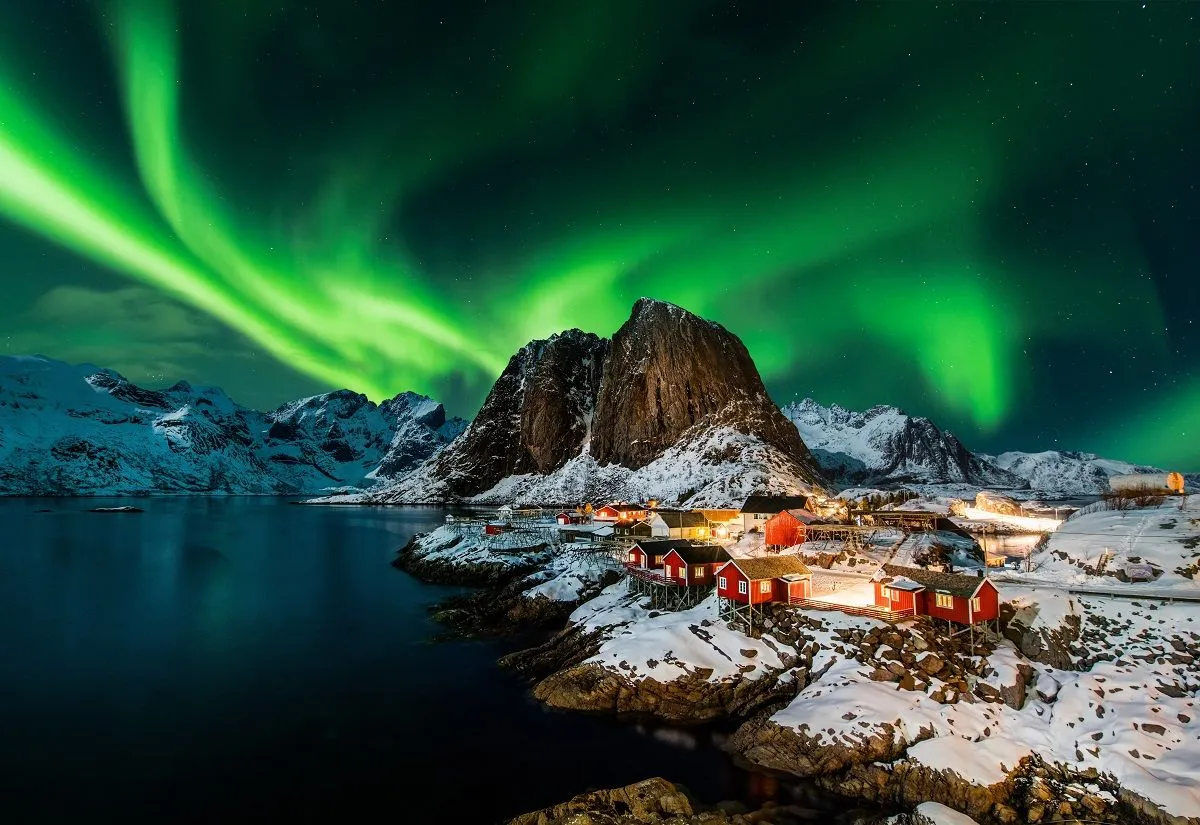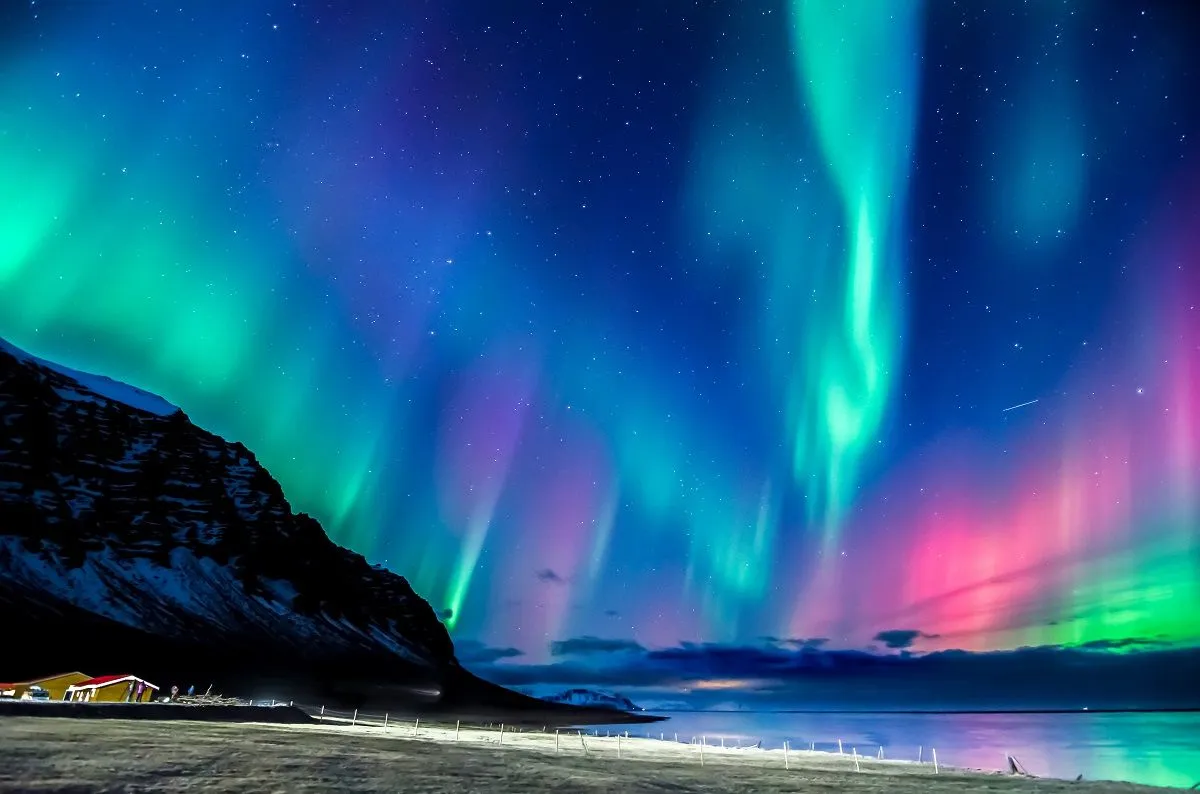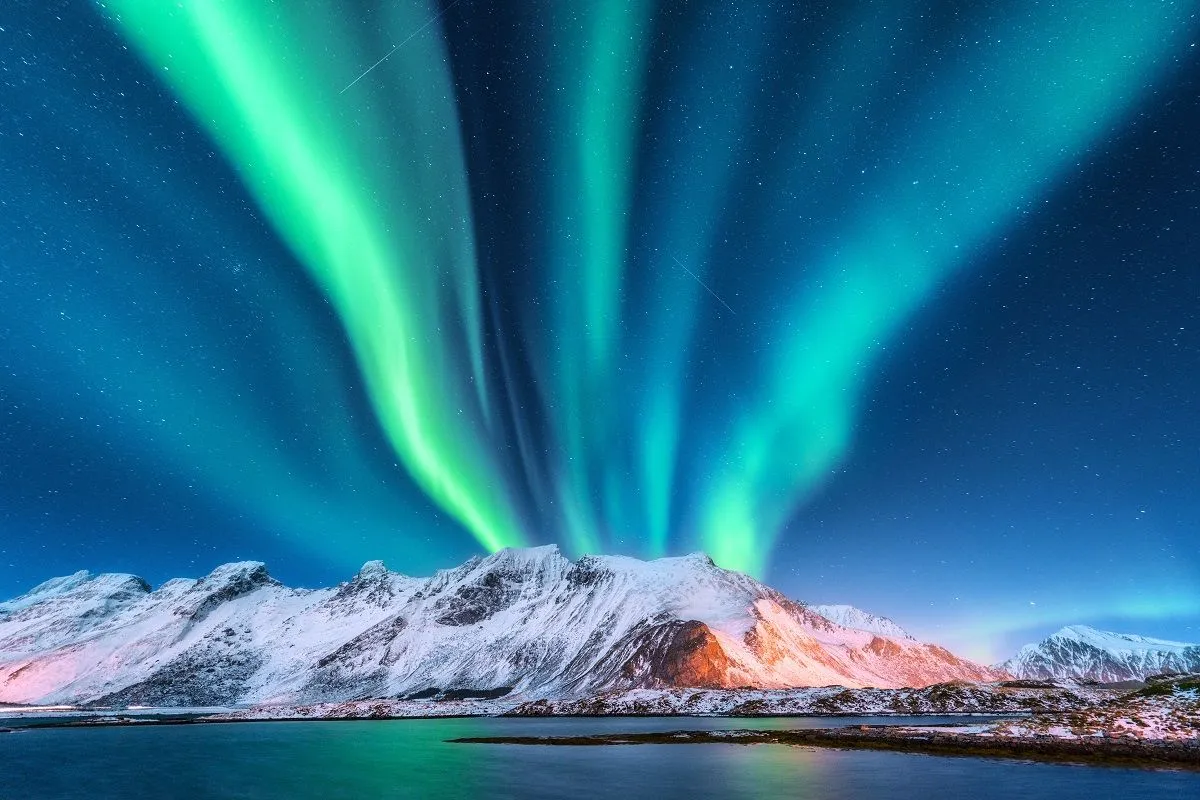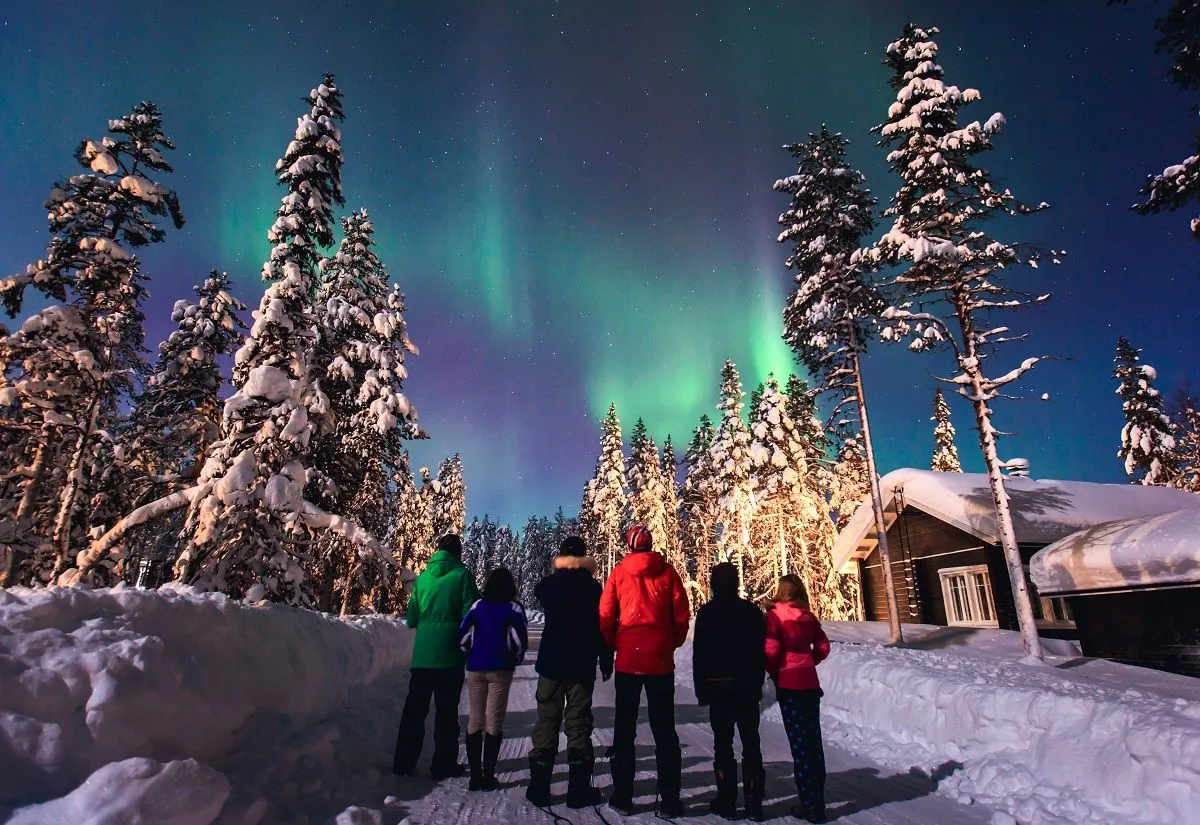Everything you need to know about The Northern Lights
Saturday, 21 August 2021

They are one of the most spectacular sights in the natural world, the Northern Lights have inspired people for generations, with more and more looking to seek out the wonder steeped in tradition and mystery.
The Northern Lights are extremely rare, mainly because of the number of elements needed to create them. It is advised that you spend about five days in a particular destination to catch a glimpse, but even then, it is no guarantee. All of which makes a Northern Lights cruise the ideal way to seeing the lights. Our cruises run for 11 to 14 nights, so you are constantly on the hunt, giving you a great opportunity to catch the spectacle.
What are the Northern Lights?
The Northern Lights are what is called an Aurora, which is a natural light display. In the north, this is called Aurora Borealis.
The science behind the Northern Lights
Aurora displays are created when protons and electrons stream from the solar surface, slamming into the Earth’s magnetic field. These particles are charged, which makes them move in spirals along the magnetic field lines.
Protons move in one direction, electrons in another, those particles hit the atmosphere. Most enter the gases in the atmosphere in a ring around the magnetic poles, where the magnetic field lines come together
As you have probably seen from the many photos of the Northern Lights, no two are the same, each one has different shapes and colours. Varying from green to reddish pink, the colours change due to the fact that oxygen atoms are green and sometimes red, while nitrogen omits orange or red light
Oxygen makes up a bigger component at these altitudes, with the highest levels being found at 60-600 miles.
READ MORE: The science behind the Northern Lights
How to photograph the Northern Lights

We believe that you should always take the time to appreciate your surroundings, but human retinas can only just pick up the redder parts of the Northern Lights. Therefore, to savour the moment, you should take photos of the spectacle.
Cameras can pick up the details that your eyes can’t, so your pictures may look completely different to what your eyes have captured, but we can guarantee that they will be beautiful if you follow our advice.
Admittedly, you need a bit of luck, but when you are enjoying a northern lights cruise, you have the time to try again and again, rather than being limited to a few days on a normal holiday.
You are firstly looking for a clear and dark sky. When we talk about dark, we don’t mean dark like at home, the skies are truly dark because of the lack of light pollution in this beautiful area.
Then you have to get the technical side in check, luckily, Ron Murray from The Aurora Chasers has offered some expert advice:
“One quick tip I like to give folks is to treat Aurora photography like landscape photography. Make sure you're incorporating a nice landscape in the shot. Otherwise, even the best Aurora photo is just a photo of colourful lights in the sky.”
If you have a digital camera, manually adjust ISO and zoom settings. It is best to have interchangeable lenses. Set ISO to 1600 and above.
In terms of lenses, it is best to get a wide-angle lens as this will allow you to capture more of the sky. Look to bring one with a focal length of 10-24mm, with a maximum aperture of f/2.8.
Begin by opening your lens to its widest aperture and set your ISO to 1600 and above, with an exposure of 10-15 seconds.
Christian Hoiberg is a Norwegian landscape and nature photographer capturing incredible shots from around the globe, and he has some advice for anyone hoping to capture the best photo of the Northern Lights. You can check out his gallery for some more snapshots of this beautiful sight.
Christian shares: “When photographing the northern lights you’re dealing with shutter speeds between two seconds and a few minutes, depending on the intensity of the lights and the brightness of the surrounding landscape.”
Equipment for photographing the Northern Lights

Tripod
Tripods are vitally important for a good photo, and it is crucial that you choose the right tripod, “capturing sharp images with this shutter speed is impossible without a solid tripod. Night photography is impossible without a tripod, at least if you want to maintain some quality in the image,” said Christian.
Remote trigger (optional)
Having a remote trigger means you don’t actually need to be with your camera, if where you have put the camera isn’t comfortable you can move and admire the lights from another position, using the trigger to take the shots.
You also won’t knock the camera around; it will be cold, and your hands may well be a bit clumsy, so having a remote will mean you can avoid bundling around for the buttons.
Spare batteries
Batteries don’t last as long in the cold so keep your spares in your pocket.
Wide lens
To capture an expansive view of the Lights and the landscape, take a wide lens. Paired with a full-frame camera, you will be able to take some fantastic shots.
When is the best time to see the Northern Lights?

The very best moment for watching the aurora is when the auroral arcs reach furthest toward the equator and the magnetic pole is in between the observer and the Sun. This special time is called magnetic midnight.
Seasoned traveller and geologist, Todd Salat lives by his ‘mission statement’ – “Be there-Preserve the Moment-Share it.” Todd told us the secret to seeing the lights, and when to get the best photo:
“Learn how to stay awake all night, because some of the best shows I’ve ever seen have been after 4 am.”
His site, Aurora Hunter is dedicated to photos, movies and books about the lights.
NASA, Atmospheric Administration and the National Oceanic create ‘aurora alerts’ and these are accessible to the public so anyone keen to catch the lights can know when and where to go.
Commonly, the best time of the year to see the Northern Lights is between September and March, but that depends on the location. For example, Tromsø in Norway believe their season actually lasts longer:
“Our Northern Light’s season covers the months when we have darkness in what you would call the ‘night-time hours’ (late August to early April) but here in the Arctic, we cannot really refer to ‘night and day’ in the same way as elsewhere. The auroral oval comes over Tromsø from 18:00 to approximately 02:00 so that is the main time period to see the Northern Lights.”
Where can you see the Northern Lights?

There are a number of locations across the Northern Hemisphere where you can marvel at nature’s own light show. You can only see them at high latitudes on dark nights, which is why it is rare to see them in England, but they can be seen in northern Scotland.
Auroras happen near to earth’s magnetic poles – that is why there is a ‘Southern Lights’ but because the South Pole is so inaccessible, they are often forgotten about. This is why you have to be at a northerly location to really experience them. Norway and Iceland are two of the best places to see the Northern Lights because of their remoteness.
The best locations have a mixture of the right weather (not cloudy, dark skies), no light pollution, scenic areas, accessible and are quite far north.
Fortunately, your Northern Lights cruise will take you to the likes of Tromsø and Alta in Norway, Reykjavik in Iceland and past the islands north of Scotland.
Norway
Tromsø
Tromsø is possibly the best place in Europe to watch the Northern Lights. A bustling city, it is one of the most incredible locations you are going to go to on a Norway cruise; so, appreciate the city as much as the lights.
The Tromsø Tourist Board understand that for many, the Northern Lights mean more than a pretty getaway.
“We feel that Tromsø is the best place in the world to see the Northern Lights for several reasons:
1. The aurora is overhead, so you are likely to see it wherever you are, as long as you have a clear expanse of sky overhead.
2. It is not too cold, as compared to Alaska or Canada. You certainly can’t easily travel to Antarctica to see them!
3. We have the possibility of travelling to find clear skies.
“We understand that for any guest in front of us at the Tromsø Information counter, or anyone who has booked online, seeing the Northern Lights could be an item on their bucket list”
“This is not just another touristy thing to do, it really means a lot to people.”
Iceland
Reykjavik
Though it can be cloudy in Reykjavik, there are many great places that are just outside of the capital where you can see the Northern Lights whilst visting on an Iceland cruise.
Grótta Lighthouse is just one place where you can get spectacular views of the fantastic aurora displays.
Scotland
Shetland
Locally known as ‘merrie dancers’, you can spot the lights at the most northerly point of the British Isles.
Orkney
Absolutely zero light pollution and a constant view of the north flooding the horizon makes Orkney a great place to see the Northern Lights whilst cruising around the UK.
READ MORE: The Top 5 Countries to Witness the Northern Lights
What to wear to wear when visiting the Northern Lights

You should aim for the three-layer principle: an inner layer, a middle layer, and an outer layer.
Temperatures range from about -5˚C to -35˚C depending on location and time, so when you are stood admiring the lights, you don’t want to be uncomfortable to ruin your experience.
Though the aim is to be warm, you should also be comfortable, and if you’re taking a lot of photos to show off when you get back home, perhaps try to be a little stylish.
Inner layer
Avoid cotton when it comes to your inner layer, cotton can actually cool your body down.
Opt for long underwear, preferably made from some form of synthetic material, which will move moisture away from the skin. Make it snug, but not restricting.
Middle Layer
Waterproof trousers and thermal leggings: wool is a great fabric to help insulate, so you should look to buy woollen thermals or woollen padded trousers.
The best way to regulate your temperature is by wearing several thin layers of clothing rather than one thick layer. Air trapped between layers is warmed by the body and creates instant insulation from the effects of cold.
Wrap up with sweaters, jumpers and pullovers covering your thermals and a t-shirt or two. As you add the layers, go up in sizes or looseness, because you want the clothes to fit comfortably.
Outer Layer
Otherwise known as the shell layer, you want something that is going to provide further insulation like the middle layer. You want clothing that will fit comfortably over your first layer of thermals, jumpers and fleeces. Go for a thick jacket with a hood and some pull-over trousers.
Accessories
If you are planning on taking photos or videos, you should buy mittens or gloves with separated fingers so you can work the kit without taking them off. If you want to really keep your hands warm, you can buy thin liner gloves to put under your gloves. We recommend waterproof mittens or gloves that are made of leather or manmade fabric for warmth.
Go for a warm woollen hat, not the old Christmas present gathering dust in the cupboard, ensure it fits properly. Your head can lose 20% of your body heat, so keep it warm.
Wear big, thick-soled socks, preferably with a small pair underneath. Walking or skiing socks are good, but layer up. Don’t just slip on a load of socks, you need the air to remain in your boots to act as an insulator, if it is lost, your feet will become cold no matter how many pairs you are wearing.
For anyone who really feels the pinch, you can bring balaclavas or scarves as an added accessory.
Good quality sunglasses are a must as it can get very bright when the sun reflects from off the sea, snow and ice.
Boots
Bunny, Mukluks or Muck boots are the necessary footwear when you watch the Northern Lights. If you’re staying aboard the ship, you can get away with walking boots, but they are not suitable if you’re going on-land.
Bunny Boots, Mukluks and Muck boots provide thick insoles and insulated uppers which will prevent heat loss.
Northern Lights facts
- Aurora Borealis derives from the Roman goddess of dawn, Aurora, and the Greek name for north wind, Boreas.
- There are some Inuit tribes in North America who call the Northern Lights “aqsarniit” which means ‘to play with a ball’ because they believe that it is the spirits of the dead playing football with the head of a walrus.
- Others believed that it was the spirits of animals they have hunted, like beluga whales, salmons, deer and seals or that it is a gift from the dead, lighting up the dark long polar nights.
- It was Galileo Galilei who first described the phenomenon as Aurora Borealis in 1619, but cave paintings of it can date back over 30,000 years in France.
- Just like snowflakes, no two Northern Lights are ever the same.
- Auroras can be spotted on the magnetic poles of Jupiter, Saturn, Uranus and Neptune.
We hope you have enjoyed this guide to the Northern Lights. If this has inspired you to see them for yourself, then please consider one of our wonderful Northern Lights cruises.
For more tips, guides, and advice, make sure to visit our blog page.



